#the grail heroine
Explore tagged Tumblr posts
Text
Arthurian characters I interpret as acespec:
Galahad, the Grail Heroine, and Bors: They generally have no apparent trouble or qualms with the eternal chastity thing (except Bors when he gets cursed, but he gets cursed).
Brangaine: In La Tavola Ritonda, she tells Gouvernail that she never wants to have sexual relationships, and in a text I haven't yet read or been able to identify, she apparently stops Kahedin from sleeping with her by using a magic pillow to make him fall asleep, a role which is Camille's in Kaherdin and Camille.
Dinadan: In LTR, they call him the Wise Man Who Does Not Love, and while he has a romantic interest in LTR, their relationship isn't sexual. To the best of my knowledge, he has no other romantic interest and no sexual relationship in all of medlit and pretty much always scorns both concepts. Usually aro, demiromantic in one text, and always ace.
Lucan: It's not anything he says or does, but unless you count the actions of Lucano the evil half-giant half-lion in LTR, he doesn't have any romantic and/or sexual relationships in any medlit I know of. Absence of evidence is not evidence of absence, but in my mind, he's on the aro and ace spectrums.
Happy Ace Week to all who celebrate!
Edit: I had somehow left out Dinadan, who I originally meant to include a picture of. I guess you could say he's implicit. Truly one of the aroace icons of all time. He ran so Jughead could also run.
#This is based on my very limited and possibly flawed knowledge#There are other Arthurian characters who I headcanon as being on the ace and/or aro spectrums#but this post is specifically for ace characters and for characters I feel there's some textual indication for#ace week#asexual#galahad#dindrane#bors#the grail heroine#brangaine#sir lucan#sir lucan the butler#ace headcanons#arthuriana#copious references to ltr#la tavola ritonda
45 notes
·
View notes
Text
The Grail Four: Bors, Galahad, the Grail Heroine, and Percival
Survivors of Camlann: Bedivere, Cynwyl Sant, Griflet, Kay?, Lucan, Morvran, and Sanddef
#Arthurian friend group tournament#The Grail Four#grail knights#Bors#Galahad#the Grail Heroine#Percival#Survivors of Camlann#Bedivere#Bedwyr#Cynwyl Sant#Griflet#Sir Kay#Sir Lucan the Butler#Morvran#Sanddef#arthurian polls#arthuriana#arthurian legend#arthurian legends#polls
14 notes
·
View notes
Note
When writing, what should I call Percival's sister on the Grail quest? Should I just say she's Dindrane? She can't just stay "Percival's sister" after all.
Hey there!
Dindrane totally works. That’s the name the filmmakers ended up using in Dragons of Camelot (2014) which is her only movie appearance that I’m aware of. But honestly in many retellings she’s given whatever name the author desires. I think it could be cute to give her a “P” name to match Percival. She’s largely a blank slate since her role is reduced to a nameless martyr. Any name you choose will be a great start for her character!
#arthurian legend#arthuriana#arthurian mythology#arthurian literature#sir percival#sir perceval#dindrane#grail heroine#ask#andalon-historian
11 notes
·
View notes
Text
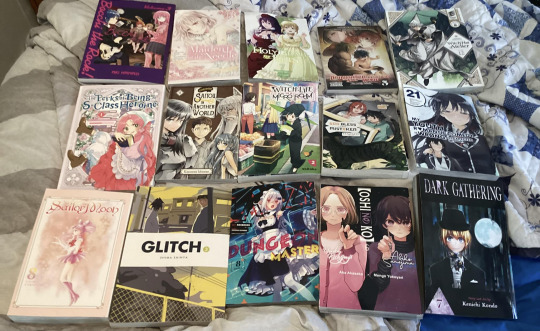
Mainly additives,not everything.Some are predicted to show tomorrow and/or Thursday while others could be me confusing it with whatever is due for next week.
#Bocchi the Rock!#Maiden of the Needle#Holy Grail of Eris#Apparently Disillusioned Adventurers Will Save the World#Witch Hat Atelier#The Perks of Being an S Class Heroine#Handyman Saitou in Another World#Witch Life in a Micro Room#God Bless the Mistaken#My Youth Romantic Comedy Was Wrong As I Expected#Sailor Moon#Glitch#Lazy Dungeon Master#Oshi no Ko#Dark Gathering
6 notes
·
View notes
Text
Dear FGO fans.
After recent events on JP, Idol Ecchan has a message for you all:

#fgo#ecchan#mysterious idol x alter#mysterious heroine x alter#grail live#event rerun voting#not really expecting it to win but I have to do my part#and hey if it does people who missed the idol costumes can get them#who knows Lasengle might even want to do something with Ecchan’s missing costume#besides it is a neat event with music#and story that’s fun and emotional
3 notes
·
View notes
Text





And at then end, she even reaches out to X, wondering how she is and where she is now.
Man, I just love this event so much.
#zack plays video games#zack plays fate go#mysterious heroine x alter#bedazzled! grail concert!#zack explores nasuverse
5 notes
·
View notes
Text



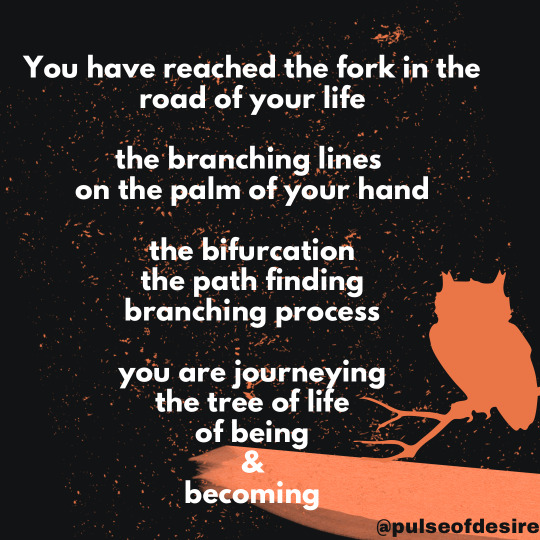


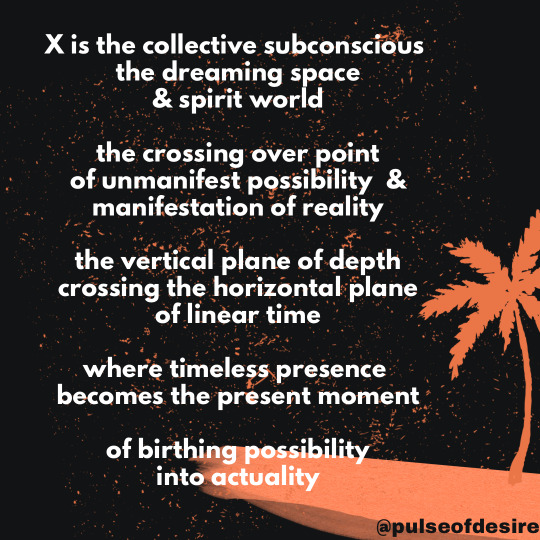

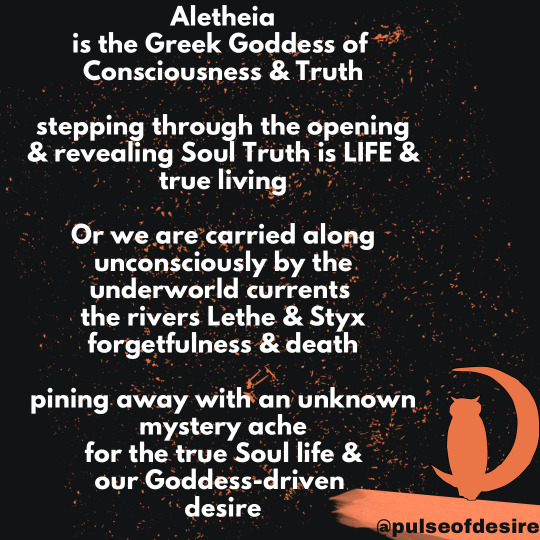
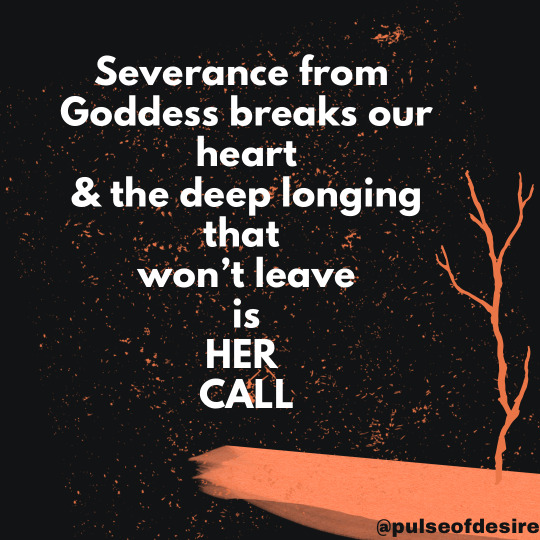
At some point, having fulfilled the dream of outer success & building the dream life comes the waking up, slowly-slowly, gnawing feelings of discontent & of something not quite right rises to the surface.
We thought we had it all, but something is missing.
Life feels arid in the Wasteland.
Remember, in the Grail stories, the wasteland is the forgetting of Goddess (resulting in ecological collapse, poverty & war). The search for the Cup is the search for living waters, the search for Soul, the search for Goddess.
Life has been lived for outer values (of the patriarchy) & not for the Soul (individually & collectively as civilisation).
Feelings of shallowness, emptiness, hollowness, meaninglessness suffuse the body as literal sensations of void & death.
Longing for substantiality is longing to be filled with our own Being-Existence, the truth of who we are.
Consciousness vibrates with a living hum.
We want to feel our own vibration & to feel aliveness pulsing in our ground, the inner body, the matrix. We remember the ground, because it is our true home.
The living ground into which we bottom out, in which we have our Soul origin is the Mother.
The “stable” foundation - we long for, holding us in this world.
Pulsing with warmth. The heat of life. The void of absence of Soul is cold & empty.
The warmth nourishes & kindles the flame of existence & aliveness of being.
#liminalspace #heroinesjourney #liminal #consciousness #being #presence #aliveness #beingbecoming #becoming #grailquest
#liminal#liminal spaces#consciousnesses#feminine magic#alchemy#witch#oracle#presence#esoteric#patriarchy#love#magic#grail#holy grail#grail quest#the heroines journey
0 notes
Text
Illyasviel von Einzbern: The Hole at the Center of Fate/Stay Night
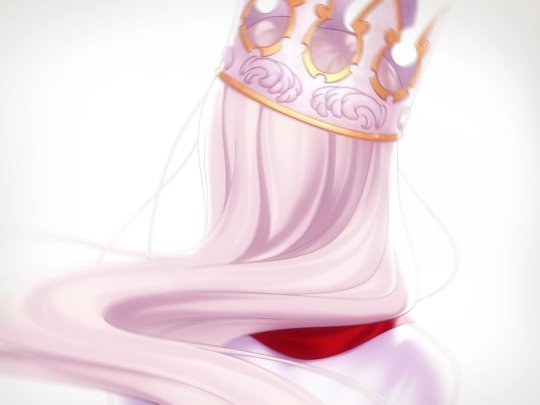
Emiya Shirou is the beating heart of Fate/Stay Night. Every character radiates outwards from Shirou, shapes and is shaped by him. He fights against foils like Archer and Kirei while growing alongside the three main heroines in each route.
There's really only one character who precedes Shirou in influence, who shapes him near-completely but cannot himself be shaped.

Emiya Kiritsugu is already dead, after all.
It's his legacy that drives the novel - but something oft-undiscussed is that Shirou only has half of it. He inherits his father’s justice, and the one that inherits his ruthlessness is Illya. Thus, Illya’s relationship to Shirou is dictated from the start.
She is everything his father left behind, the first gatekeeper of the moonlit world of death and magecraft that Shirou now finds himself in. In this role she transcends routes, appearing at the end of the third day to deliver a near-lethal attack just as the story branches off.

She seems intent to deliver Kiritsugu’s baggage to Shirou, to make him reckon with the past that he himself never experienced; the truth that a hero can only help those he sides with while many others are left alone in the cold.
In this way her very existence is a far more fundamental challenge to Shirou’s ideals than that of any other character - and yet this challenge is met only indirectly. Much of the information regarding her true identity and relationship to Shirou is elided until the end of HF.
She functions similarly to Sakura, a character who totally changes the reader’s perception of the first two routes in retrospect. The reveals about Illya force us to reevaluate how positive her ending in the Fate route really is.
In the narrative of Heaven’s Feel, both Illya and Sakura are considered ‘doomed’ - able to be saved only by Shirou sacrificing his own life to Archer’s arm.
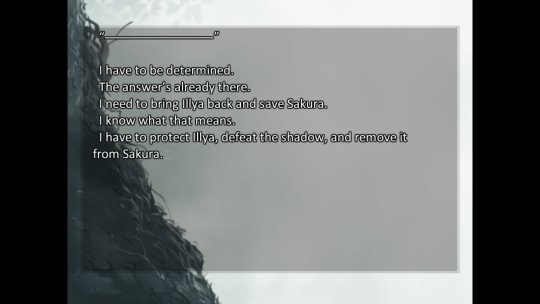
It’s the crux of their characterisation, in the same way that Saber’s pursuit of the Holy Grail leads her into timeless and uncountable doomed battles. In a route based around that character, you would expect fixing it to be the main thrust of the plot.
And so just as the Fate route is focused on Shirou clashing with Saber over her lack of regard for her safety, and Heaven’s Feel is focused on accepting even the ‘impure’ parts of Sakura, there is no route focused on showing Illya that she needn't give up on having a normal life.
Instead all of her scenes in Heaven’s Feel are about accepting that she cannot have one.
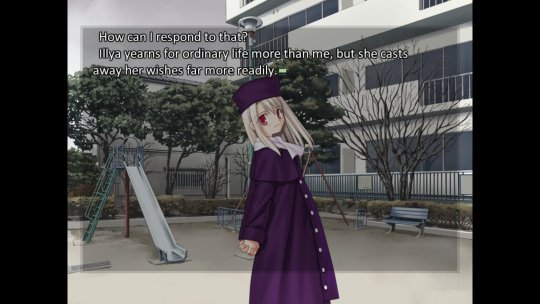
This is the hole in the center of FSN that I’m talking about. Its absence is felt keenly throughout the novel, because Illya has another role besides a specter of Shirou's past. She embodies the prize and object of the Holy Grail War itself - the very same wish-granting device.
Many of the characters in this story are not fighting for the Grail specifically, but nonetheless their strong personalities and desires cause them to clash with one another, in a process Kirei sees as comparable to everyday life.
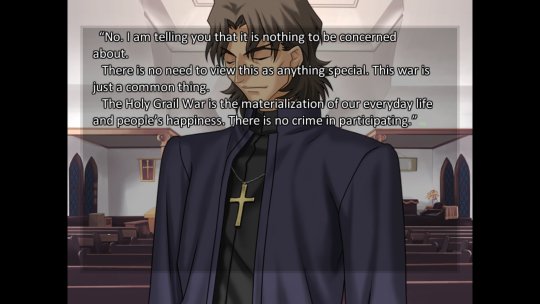
Their wishes, both in the form of the dead’s regrets and victor’s will, enter the neutral, empty Grail in order to produce a miracle. The only one not allowed a will of their own is the vessel of the Grail, who, in absorbing these desires, must completely erase their humanity.
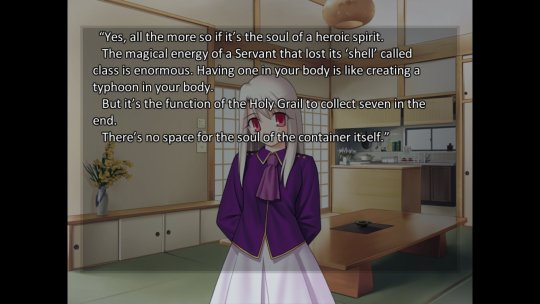
Illya is not intended to have a reason to pursue the Grail, nor any life beyond obtaining it. The war is premised on the sacrifice of the Servants, yes, but nonetheless they enter as contestants. Illya, like Justeaze before her, enters the ritual only as a sacrifice.
And yet an outside element is introduced. Illya being part-human, the product of an actual family rather than just a clone allows for her to have personal motivations. She holds on to her resentment of Kiritsugu, despite knowing that it’s pointless, because it’s all she has left.
A parallel can be made to the Grail itself. Supposedly a pure wish-granting device, it becomes corrupted through the influence of Angra Mainyu, one small, perverse wish colouring the whole thing black.
The desired salvation of the Einzberns, their thousand-year project relies on being able to reproduce the miracle, to understand every component part of their attempts in order to draw ever closer to the Third Magic, but Illya is a random factor, born to a human parent.
She’s also their greatest creation since Justeaze. Miracles, after all, exist because they are not understood.
The corruption of the Grail with the darkest desires of the world is just the inevitable result of any wish - the price of becoming a human instead of existing as a machine. Live long enough and anyone would turn into Zouken, higher goals suborned by a base desire to escape pain.
Like Illya the Grail is a failed project, a tool that can only provide salvation of a limited nature & only fulfill its purpose incompletely, proof positive that true perfection does not exist in the world of Fate/Stay Night.
In Illya’s case the bug in her programming comes fundamentally from a desire for family, for someone to be close to her. Despite her dysfunctional initial approaches she’s perfectly capable of living normally alongside Shirou.

The issue, then, is the Grail War itself.
Her two sides, two different origins, come into conflict here, and her role as the Holy Grail consistently wins. Not because she desires it in any real sense, but because she doesn’t believe that she can do anything else.
Consider how the Fate route ends with Saber and Shirou trying to live without regrets, accepting both the negative and positive aspects of the past without dwelling on that which cannot be changed.
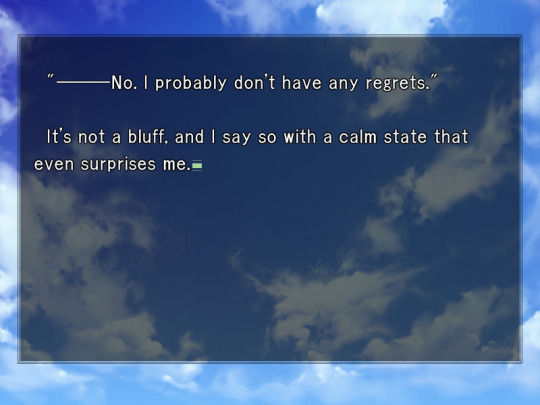
Consider how Illya in the Fate route doesn’t say a single thing about her condition, refuses to burden others with that knowledge, accepting the fact of her death and instead choosing to live in the moment.
Consider how the Unlimited Blade Works route is about Shirou trying to live without regrets, accepting that he will not always succeed, that his self-sacrificing nature will hurt him, but nonetheless his pursuit of that goal is worthwhile.
Consider how Illya’s death is used to illustrate this, how she cannot be saved regardless of whether Shirou makes the choice to intervene or not, how his sorrow is used as proof of his brokenness and his ability to move forward regardless is used as proof of his strength.
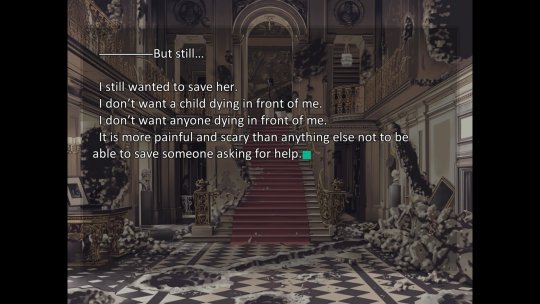
Consider why the Heaven's Feel route is named after the ritual that materializes the soul, why this is identified with salvation and rebirth by the Einzberns. I would argue that the Third Magic is a metaphor for the process Shirou undergoes throughout the novel.
He evolves from a machine into a human, gaining his own desires and the will to live. And just as Heaven’s Feel, the ritual, requires a sacrifice: Justeaze’s blood forms the foundation, so too does Heaven’s Feel, the route: Illya spends her own life to fully realize Shirou’s.
In moving past Kiritsugu’s legacy, he moves past his belief that his life is worth less than others. He wants to live, wants to let Illya save him, wants to let her sacrifice herself for him. In moving past Kiritsugu’s legacy, he moves past Illya.
I don’t blame him. I just want to emphasize how significant to this novel the existence of suffering is, how important the figure of someone who cannot be saved, how necessary a single person’s sacrifice. And how this falls on Illya in every route.
In the latter parts of the Fate route she quickly disappears from story relevance. Her functions as a Grail offer a convenient excuse to have her sleeping for much of the day, as it does for Kirei’s kidnapping of her, stringing her up as a sacrifice to open the gate.

In UBW we have Gilgamesh brutally ripping out her heart. He values her purely for her core, which holds the Grail, tossing aside the rest of her body.

If her role as the Grail is what drives her doom, though, she is at least partially able to overcome this at the end of Heaven’s Feel.
For a brief moment, Illya escapes the bonds of fate by uniting her deeply personal wish with the impersonal functions of the Grail.
She also dies. She fucking dies, okay? I’m so tired of talking about this as though it’s supposed to be a good thing, as though we’re just supposed to accept it as the best possible option.
It works precisely because we know there is another, because we know for a fucking fact that an Illya route could have existed, that her salvation is possible not just from a meta perspective but directly implied in-universe.

Illya’s power is to grant wishes, but she is incapable of giving voice to her own. She needs someone there by her side to tell her that it’s okay to want to live, and yet- Shirou is so fucking broken that he needs her to do that for him instead.
Illya could have lived, but she doesn’t, and in not doing so she carries half the weight of this story’s tragedy on her back.
In a way this is an excuse for the lack of an Illya route. I really do think its blatant absence adds something to Fate/Stay Night, really sells the tragedy of HF, becomes even more beautiful precisely because of its unattainability.
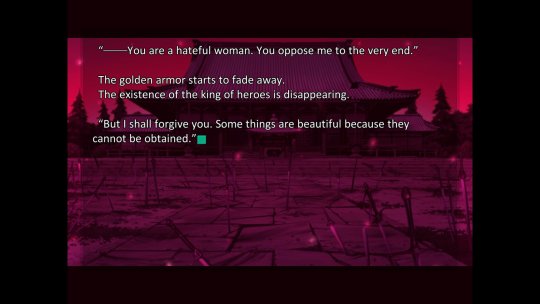
It’s a comment on how the artistic process, materializing your soul on paper if you will, is an inherently restrictive one, rife with failure and things left on the chopping board.
But it does not, not for a second, mean that we should accept the lack of an Illya route. It doesn’t mean the desire for it is a bad thing. It doesn’t mean that its addition would make Fate/Stay Night worse.
It would, however, become a different game at that point, and here I want to pay respect to the one that has lived alongside me for twenty years.
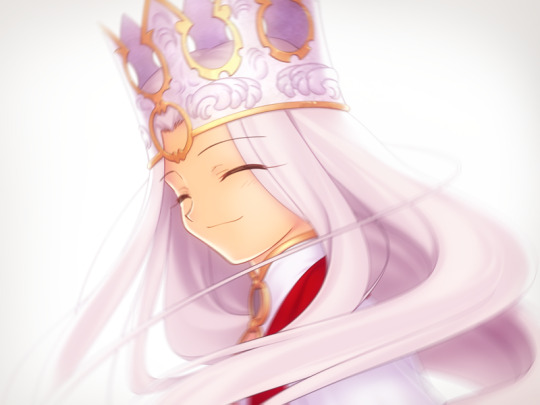
Thanks for reading, and happy anniversary to my favourite story of all time.
279 notes
·
View notes
Note
The real heroine of the Infinity Arc is Sailor Saturn. Yeah, Neo Queen Serenity did revive everyone on Earth. But Sailor Saturn was the one who defeated Pharaoh 90 AND destroyed his home dimension, the Tau Ceti system, when Sailor Moon couldn't even defeat him even with both the power of the Silver Crystal and Holy Grail.
Actually, I think they're both the true heros!
Something I REALLY love about Sailor Saturn is how she's a foil to Sailor Moon/Serenity. Naoko Takeuchi was not subtle about this; in the 3rd artbook, she even placed art of Saturn and Serenity next to each other and referred to them as "the two messiahs."
Yes, Saturn represents death and destruction. But she specifically represents creative destruction. Just like how the mass extinctions of the past eventually gave rise to new lifeforms, Saturn destroys worlds that have run their course so that new ones can be born. Her role is to unleash destruction and pave the way for rebirth; Sailor Moon's role is to facilitate that rebirth.

The two are inextricably linked, just like death and rebirth in the real world.
67 notes
·
View notes
Text
because of the lack of female protagonists in... pretty much every genre, really, people tend to hype up a lot of series as "better than the average [insert genre]" just because it has a female protagonist rather than male
(personally i think girls deserve formulaic schlock, too, like how bofuri is basically the average MMOVR with a black haired plain looking boy repeatedly stumbling upon cheat powers except the protagonist is a girl)
but when i look for new titles saying "i want interesting worldbuilding where we get to see how this fantasy world works as a society and the court intrigue goes beyond high school level mean girl bullying" and people respond with titles like "i'm in love with the villainess" it's like asking for a grilled steak and getting handed a hamburger
burger's good, but not what i'm looking for
so here's a list of my manga/webtoon recommendations for stories of political intrigue in fantasy worlds with a female protagonist (not all of them are isekai or regression or reincarnation, most are straight up just fantasy world):
The Holy Grail of Eris
The story of a kingdom after the villainess is executed for attempting to poison the heroine beloved by the crown prince. Our protagonist is Constance Grail who finds herself being haunted by the ghost of the villainess Scarlet Castiel who saved her from suffering the humiliation of having her engagement broken because of a false accusation.
Scarlet claims that she has been framed, and together the duo is set to find out the truth regarding her death sentence.
Saying more than this would ruin the plot twists, but read this if you're interested in a story where it makes sense for a ducal daughter to be sacrificed in exchange for a lady of a lower class as the nation's queen.
Itsuwari no Freya (localized as Prince Freya)
A small kingdom struggles to defend itself against a powerful warmongering kingdom with the leadership of their cunning prince. Except, the prince has died. To prevent the flame of hope from being extinguished, the prince's inner circle employs the aid of Freya, a village maiden with the same face as the late prince.
There is no time to prepare her to learn the ropes of politics. Now Freya must plunge immediately into international turmoil and figure out a way to secure support from other nations with the help of the prince's knights and, of course, her own charisma and intelligence.
Ebony (localized as Lady Evony)
Sensational news sweeps the nation: the Grand Duke has put a criminal under his protection. Evony was accused of her father's murder and ended up suffering all kinds of abuse in the hands of the prison wardens who despise her.
Yet her time at the women's prison was also the only time she was able to gain education in a misogynistic nation who still bars women from learning while other countries have a headmistress for their famous college and traveling tradeswomen.
As she heals from the wounds inflicted both on her body and her heart, she realizes she wants to become someone who can stand equal to the Grand Duke and not just a fragile flower to be protected in his garden.
Great if you're looking for slow burn romance where the main couple are equals instead of the usual "obsessive yandere male lead who holds to power/lovely lady who struggles to be useful" or "stupid but doting male lead who needs his very smart lady to show him the way"
Also great if you're looking for a korean webtoon where all their problems CANNOT be solved by the protagonists being wealthy capitalists
The Falcon Princess
While other webtoons tend to focus on noblewomen's tea parties as a source of conflict, The Falcon Princess focuses on a kingdom in the middle of being invaded.
The protagonist is a princess on the run when the imperial palace ends up ransacked by the enemy nation. She wakes up as a falcon and ends up finding herself as her kingdom's commander's messenger bird.
Despite the language barrier, the princess helps the commander figure out the enemy's location, strategy, and various ways to defeat them and finds herself becoming a symbol of hope who leads the army into reclaiming her nation.
JK Haru is a Sex Worker in Another World
Last but not least but is definitely the most controversial pick. Haru is a girl who gets reincarnated in another world after she got hit by a truck alongside her otaku classmate.
While said otaku is living his best life as his power fantasy becomes a reality, Haru refuses to be his girl in exchange for a comfortable life, even though the only job she could have in a misogynistic world where women can't even eat at a restaurant without a chaperone is at a brothel.
And yet, she doesn't hate it. Although the customers can be rough, she befriends the other prostitutes at the brothel and figures out how to enjoy her job. It's a story that depicts sex workers with respect, acknowledging their struggles without turning it into misery porn.
It also asks an important question regarding the trope of "overpowered isekaid protagonist changes the world for the better": CAN they actually change the world just because they have cheat powers? After all, societal issue isn't something you can solve using brute force and money alone
#manga recommendation#webtoon recommendation#the holy grail of eris#itsuwari no freya#lady evony#the falcon princess#JK Haru wa Isekai de Shoufu ni Natta#JK Haru is a Sex Worker in Another World
91 notes
·
View notes
Text
William Morris' works (3)
We talked about "The Well at the World's End" in the previous post: here I want to talk about the second novel - sorry, romance - of Morris I know about. It is not one of his most famous pieces, but it is a very interesting and fascinating one: The Water of the Wondrous Isles.
It was part of the recent French translations that were published, and as with the last post I will info-mine the préface written for it, this time by William Blanc - and titled "The first feminist Arthurian romance".

Despite the old age of The Water of the Wondrous Isles - first published in 1897 by Kelmscott Press - it manages to be a very modern work, that predicted several evolutions of the fantasy genre nearly a century before they happened. Today it is culturally common to do a "feminine" or "feminist" version of the Arthurian myth (those two are not the same thing), in the wake of Marion Zimmer Bradley's very popular 1982 "The Mists of Avalon" which told the story of Camelot from the point of view of Morgan, reinvented as a great pagan priestess. You also find this with the bow-wielding Guinevere of Fuqua's 2004 "King Arthur" movie. But in a certain way, The Water of the Wondrous Isles did a "feminine Arthuriana" first.
William Morris, like the rest of Victorian society, was fascinated by the legends of the Round Table - he dedicated several of his youth productions to this myth. However unlike Alfred Tennyson, who was a poet adored by the upper-society of England and who liked to depict Camelot in a very misogynistic and conservative way, Morris was basically working for the "counter-culture" by making female characters his protagonists and his heroines. Already in his "Defence of Guinevere" (a verse work published in 1858) he depicted the queen of Camelot put on trial for her adulterous relationship with Lancelot: she offered a speech that turned the accusations on their head, to denounce the sordid institution of arranged marriages. For Morris, it is this tradition which is to be blamed, instead of the legitimate desire of women.
Forty years later, with his "Well at the World's End", Morris offers a variation of the quest for the Holy Grail, where a man and a woman quest as equals. H.G. Wells himself wrote about "The Well", in 1896, praising it for being a version of Malory's works where women are placed on the same rank as men. But what about "The Water of the Wondrous Isles"? A first obvious thing is that one of the main characters is called Arthur, and becomes the lover of the heroine Birdalone. Even better: after many adventures, he has a "madness episode" during which he flees to the depths of the wild forest for several years, almost turning into an animal. This is a common trope of the medieval tales of Camelot: a knight in love loses all reason because of his passion (see Tristan, Lancelot or Galehaut). But Morris, an admirer of the Arthurian myth, turns the tables and changes the tale so that his story corresponds to his political views and so that, more importantly, he can mock the Victorian sanitized versions of the Arthuriana. Here, it is not Lancelot or Tristan who becomes mad, it is rather a character with the name of the king of the Round Table - Morris has his "Arthur" wearing rags, wandering in the wilderness, not as a ruler but as a simple knight in love. So that Arthur takes on the role of the very man who, in the legends, seduced his wife. It is even more striking to notice that, in the medieval texts of the 13th or 15th centuries, once the knight is healed from his madness he returns into the warrior-aristocracy of their society. Within Morris works, such a "return to normal" never happens.

However, it is Morris' handling of female characters which requires a comparison with the Arthurian texts to fully understand his project.
The protagonist, Birdalone, is snatched away from her mother by a witch who turns her into a servant. She escapes by using a magical boat which allows her to cross the lake forming the titular "water of the wondrous isles". Yet, the boat is strange, because to work it requires the blood of its user to be spilled. This dangerous navigation, in which the heroine can lose her life, recalls another famous 19th century figure: the Arthurian poem of "The Lady of Shalott", by Alfred Tennyson (1832). To offer a brief recap, a young woman named Elaine of Astolat lives in a tower where she works on a tapestry. Seeing Lancelot by her window, she falls in love with him, abandons her weaving work, gets out of her tower, takes a boat leading her to Camelot, but dies as a result of her uncontrolable passion devouring her from the inside. Tennyson, with this tale, translates one of the fears of the Victorian patriarchy: to see women escape the domestic space in which they are confined, to see them express freely their desire. The poet warns maidens that such a behavior will lead to a harsh and horrible downfall (see 2000's "Myth and National Identity in Nineteenth Century Britain. The Legend of King Arthur and Robin Hood", Oxford University Press).
Tennyson's poem was fitting perfectly within the British society of the 19th century, and thus was illustrated many times. It was notably loved by the Pre-Raphaelite Confrery, which had many of its member later becoming friends of Morris: Elizabeth Siddal, in 1853, or Dante Gabriel Rossetti in 1857 both illustrated the poem. William Holman Hunt also made a drawing of Elaine in 1857, depicting her engulfed in her madness (symbolized by her disheveled hair, with the weaving of her tapestry mimicking a spider web). The colorized version of this drawing (1888-1905) is even more explicit: the young woman turns her back on a depiction of the Virgin Mary (see Jeffers Thomas' "Tennyson's Lady of Shalott and Pre-Raphaelites renderings: statement and counterstatements"). And of course, John William Waterhouse offered two different paintings of the tragic fate of Elaine, one in 1888 and one in 1894.

William Morris has this entire set of imagery in his head when he write "The Wondrous Isles", but he inverts it: the boat of Birdalone does not take her to her doom, but rather helps her escape imprisonment - she flees the domestic slavery in which the witch maintained her and lives various adventures. [In the text, Morris has the witch call Birdalone her "thrall", a term from the Old Norse society to designate a slave - the use of such an archaism is a manifestation of Morris' fascination for Old Norse texts]. To get out of the house is to encounter life, not death. In fact, we see here Morris criticizing the harsh conditions house-workers lived in as they toiled in the homes of upper-class Victorian families. When "The Water" was written, a third of the employed women were house-workers, and they were roughly in their twenties, just like Birdalone (see Davidoff Leonor's "Mastered for Life: Servant and Wife in Victorian and Edwardian England", and Theresa M.'s "The Domestic Revolution: The Modernization of Household Services in England and France 1820-1920").
Birdalone escaping through the boat is Morris' way to represent a woman free of the weight of the conservative Victorian society: she is free to go wherever she want, and to love whoever she wants. But these adventures have their dangers: throughout her journey she meets brutal men who, to possess her, threaten her and wound her - some even openly claiming they will rape her, such as the Red Knight. We find here a recurring theme in Morris' Arthurian texts, who is likely inspired by the murder of Morgause at the hands of her own son (who accuses her of adultery) in the medieval "Morte d'Arthur" ; he might also be influenced by the fate of Guinevere. Morris often depicts a masculine and patriarchal violence against women, but only to denounce them, such as through the trial of the queen of Camelot in "The Defence of Guinevere" ; or with the murder of the Sun Knight's wife in "The Well at the World's End" (the Sun Knight himself being a clear reference to Gawain).
But Morris doesn't depict the tragic condition of women as a fatality: on the contrary, his heroines fight back against the masculine aggression. Guinevere has her long defence-speech to denounce all those that condemn her relationship with Lancelot, Birdalone fights at first with a bow (a weapon commonly associated with women in Victorian England, as they practiced archery for sport), then wears an armor and uses a sword to attack and defend herself or her kin. Of course, Morris is still a man of his time, and so he depicts Birdalone easily outmatched every time she fights a man... But in this end of the 19th century, to have a woman fighting is a shocking thing. In the USA, one would have to wait forty more years before the fantasy pulps starting putting as main characters female warriors - such as C.L. Moore's Jirel of Joiry or Robert E. Howard's Dark Agnes.

Birdalone does not just go through her trials by fighting. As Florence Boos noted, the heroine of "The Water" uses the help and assistance of other women (Boss Florence, "The Socialist New Woman in William Morris' The Water of the Wondrous Isles): the three maidens, Aurea, Atra and Viridis, but first and foremost Habundia, the "Lady of the Wood" who helps Birdalone flee the house of the witch.
Habundia has a unique place within the text: associated with magic and the forest while clearly not being part of the human species, she reminds of another famous Arthurian woman at the time: Viviane. Just like with the Lady of Shalott, Tennyson gave Viviane a bad name in his poems. In his "Idylls of the King" (1859), he depicts Vivien as the one who trapped Merlin with her spells, in the heart of the forest, to steal his powers before locking him inside an oak-tree. We find back this fear of the Victorian patriarchy that is the "fallen woman", the "prostitute, the temptress, the archetype of the woman who, just likes Eve, drags men to their downfall (see Auerbach Nina's "Woman and the Demon: The Life of a Victorian Myth"). Like in medieval literature, the male doom is tied to the forest, perceived as a wild and dangerous space. In Gustave Doré's engravings for Tennyson's Vivien, we see Merlin as a very old man trapped between the young seductress and a tree whose roots wrap themselves around the couple.
Morris rejects this imagery: just like with Elaine or Guinevere, he inverts the tradition. Habundia offers a positive Vivien: with her, the forest and magic are not perdition, but salvation. Inverting Tennyson's discourse is not just a way for Morris to oppose himself to the famous conservative poet ; it rather takes place in a larger political context. Ever since hs youth, Morris has been influenced by the progressist Romantics. In the early 1880s, he engaged himslf in socialist revolutionnary movements: in 1883 he joined the Democratic Federation of Henry Hyndman, before co-founding at the end of 1884 the Socialist League and becoming the chief redactor of its newspaper, "Commonweal", to which participated Paul Aveline and Eleanor Marx (daughter of Karl Marx). While they mostly focused on questions of "classes", they still formed a thought about the life conditions of women, and denounced the bourgeois patriarchy. In 1885, they published the English translation of August Bebel's 1879 Woman and Socialism (Bebel was one of the leading figures of the German socialist movement). Simultaneously, a scandal erupted when William Thomas Stead published an investigation about child prostitution. All of this pushed Eleanor Marx to write with Paul Aveline, in 1887 "The Woman Question" (see Kapp Yvonne's "Eleanor Marx, a biography"). One year later, Morris and other members of the Socialist League supported the strike of female workers in the match-making factories of London (see Taylor Rosemary's "The city of dreadful delight: William Morris in the East End of London").
The institution of marriage is the focus of the socialist critique against women's life-conditions in Victorian society. The manifesto of the Socialist League, published in the first issue of "Commonweal" and cosigned by Morris and Eleanor Marx, compares marriage to prostitution. Eleanor Marx goes further in september 1885 by claiming that the sexual exploitation of women is the same as the salarial exploitation of capitalism. All of this transpires in the fate that the witch prepares for Birdalone: she is born from a poor family, her body is entirely offered to her new "mistress", and said mistress not only uses the girl for manual work, but also plans during her teenagehood to prostitute her. A passage of "The Water" seems to take back the same comparison Eleanor Marx makes between domestic work and prostitution.
In front of all this, Birdalone does not find a solution in the protection of a male figure: rather, she emancipates herself through her own work, notably her mastery of embroidery. The witch wants her to use this art to better seduce men, but Birdalone transforms it into a tool to gain her freedom.

"The Water of the Wondrous Isles" prefigures several motifs that shall become central in 20th and 21st century fantasy, but it also depicts something original for fantasy: a fantasy world where a lot of focus is given to crafts and the artisanal world ; something quite unusual in an epic genre that often ignores handwork.
Morris is a socialist, but also a heir of John Ruskin, who opposed the alienation of the 19th century factory-worker, used in a chain-work to reproduce endlessly the same calibrated ugly objects, to the (very idealized) freedom of the medieval craftsman, able to be autonomous in his work and to create unique (and thus beautiful) items. Morris put this thought in practice: all throughout his life, he interested himself in the "decorative arts", creating furnitures, wallpapers, staine glass and tapestries. He founded his very own society, Morris and co., in 1861, and thirty years later he opened his own publishing house, Kelmscott Press, in which he tried to create books imitating medieval manuscripts. Morris does not separate craftsmanship from his literary productions, the two are linked: the beautiful book is a box containing the beautiful text, and together they form a prolongation of his political engagement, an answer to the ugliness produced by the industrial capitalism.
In "The Water of the Wondrous Isles" Birdalone embodies this political valorization of labor. Her goal in life is not to marry a beautiful prince or to have children, but to become autonomous through her work. An entire part of the book depicts her leaving her friends to work with her own hands in the City of the Five Crafts. This industrious community evokes the descriptions Tolkien would write sixty years later of the Shire, in The Lord of the Rings (Tolkien was five when "The Water of the Wondrous Isles" was published) ; but whereas Tolkien's creation is a small countryside society, Morris presents an entire city where the handwork is not decorum but rather the heart of the action: when she arrives, Birdalone proves her talent and is quickly accepted by a local guild. She later creates her own workshop, and for five years she wlecomes numerous women in it, before leaving and offering her business to her coworkers. This reminds us of the activities of Morris, with his "Morris and co." and "Kelmscott Press" ; it also reminds us of the "socialist future" imagined by Morris, a future in which the guild system of the Middle-Ages returned, to oppose the capitalist exploitation (this idea of the future is what later gave birth in the British Left to the "Guild Socialism").
The sejourn of Birdalone in the City of the Five Crafts, which forms the introduction of the sixth part of "The Water", is not just an aside: it is a central element, because Morris shifts again a traditional motif. The one of Cinderella: in the version that the brothers Grimm popularized and that Morris is aware of (he asked Edward Burne-Jones in 1864 to make ceramic ornaments depicting the Grimm's Sleeping Beauty and Cinderella), Cinderella, a girl from a modest background, marries a prince. Morris' similarly humble heroine meets the beautiful knight Arthur, but their relationship does not elevate Birdalone in society. On the contrary, Arthur and her leave the castle and settle themselves in the birth-town of the young woman, governed by a council. Here, Arthur becomes part of this tiny republic, earning a role that Morris explicitely compares to a Roman consul. Meanwhile Robert, a former employee of Birdalone who worked with her at the City of Five Crafts, marries Aurea, a noble friend of Arthur. The tale ends in a hamlet of craftsworkers where the frontiers between the classes are broken: only remains a community of free workers, the medieval town becoming an allegory of the future socialism.

The political fight of Morris is mixed with a fascination for, and an idealization of, the Middle-Ages. His vision mixes progressist hope and a nostalgia for a lost era. He explored it in his 1890's utopia, "News from Nowhere", and we find it here through the character of Habundia. Unlike the other companions of Birdalone, at the end of the story she does not live within the city, but in the nearby forest. She does not embody Middle-Ages of guilds, but rather the Middle-Ages which are (ever since the 18th century) associated with an idealized nature, the druids, the fairies and the elves. The Lady of the Wood is "not from the race of Adam", she is not a human being, but she is far wiser than humans and owns an ancient knowledge that she describes as a "great book of nature", a knowledge that she transmits to Birdalone.
We find here a typical motif of fantasy: the "wise one" from a non-human race who lives in an ancient forest. It is Galadriel, from The Lord of the Rings, it is Yoda from The Empire Strikes Back. Morris doesn't invent this motif: it already existed at the end of the 14th century, in Chaucer's "Tales of Canterbury", within the story of The Wife of Bath. Taking place in Arthurian times, the texts opens with a description of the Queen of the Elves dancing merrily with her subject, before holy Churchmen banish them away. Morris knows this text, and Kelmscott Press published in 1896 a beautiful edition of the Tales of Canterbury, illustrated by Edward Burne Jones (in general, many echoes of The Wife of Bath's Tale can be found within The Water of the Wondrous Isles). But whereas Chaucer rejoices in the disappearance of the elves, Morris regrets them. This nostalgia, which will be found again in Tolkien's works, is a new thing for the Victorian era, and it translates a new fear: the one of seeing nature disappear because of industrialization. Morris interwoves this with a political thought: at the end of the 19th century it was a common thing to believe, in socialist circles, that many pre-industrial ancient societies were organized in a communist way. This "proto-communism" was explained by the fact these ancient societies were supposedly dominated by women, a trait thought to have survived in the Norse and Germanic societies of early Middle-Ages but that disappeared with the apparition of "private property", which imposed a patriarchal power.
This idea, originally created by Friedrich Engels in his 1884's The Origin of the Family, Private Property and the State, heavily influenced Morris. (See Boos Florence's "Gender-Division and Political Allegory in the Last Romances of William Morris", and Eller Cynthia's "Gentlemen and the Amazons: The Myth of Matriarchal Prehistory") This imagery, which was a very idealized version of the past, fully played in the creation of Habundia. She embodies the perfect "original past", a past without economical property, without social property, without sexual property. If we admit that the city where the adventures end symbolizes an utopia, a prefiguration of socialism, the last pages of "The Water" allow an idealized past to neighbor a desired future: the primitive-communism of Habundia and the democratic city of the free craftsmen. Between the two is a nightmarish aside, the one of the industrial and patriarchal capitalism, in which the reader lives, and expressed through the character of the witch, who took Birdalone from her mother, abused her, and is never forgotten.

#the water of the wondrous isles#william morris#fantasy literature#pre-tolkien fantasy#fantasy book#fantasy archetype#political fantasy
20 notes
·
View notes
Text
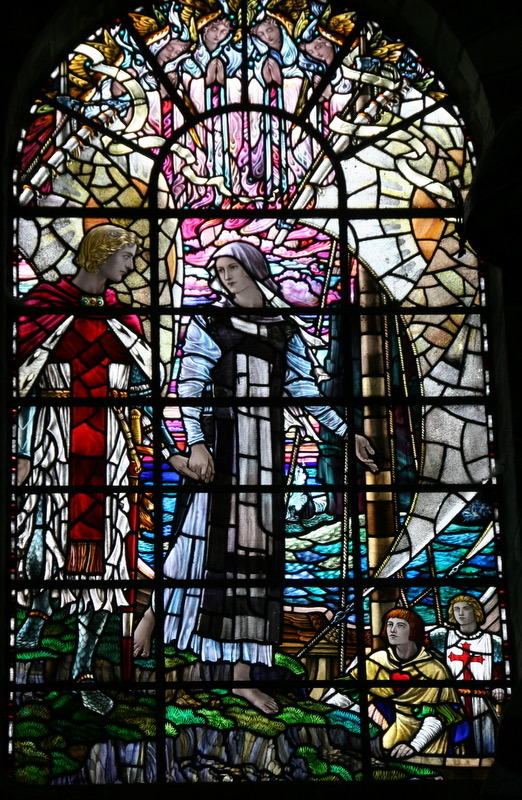
The Grail Heroine leading Galahad to the ship, where Percival and Bors wait
Stained glass by Veronica Whall for King Arthur’s Great Halls at Tintagel
#galahad#the grail heroine#the grail quest#percival#bors#King Arthur’s Great Halls#Tintagel#arthurian legend#stained glass#arthuriana#arthurian legends
44 notes
·
View notes
Text
Arthurian Friend Group Tournament Finals!
Morally Dubious Sorceress Squad: the Lady of Avalon, Morgan le Fay, the Queen of Norgales, and Sebile
The Grail Four: Bors, Galahad, the Grail Heroine, and Percival
#This is the matchup of matchups#These groups are extremely different and would probably have scorned each other if they went to the same high school#The sorceresses would have found the Grail Four uptight#and the Grail Four would have thought the sorceresses were beholden to the Devil#Morally Dubious Sorceress Squad#the Lady of Avalon#Morgan le Fay#the Queen of Norgales#Sebile#Sebille#The Grail Four#Bors#Galahad#the Grail Heroine#Percival#Arthurian friend group tournament#arthurian polls#arthuriana#arthurian legend#arthurian legends#polls
4 notes
·
View notes
Text
Alright, strap in for the lie of the decade So I got this ask
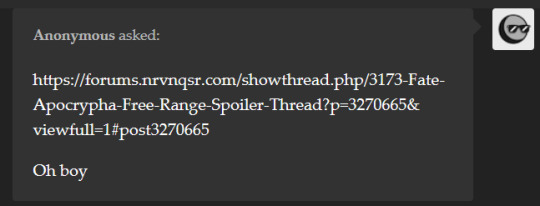
So I think; “well what’s this all about?” I open it up and its this pretty quoted interview, so I’m like “huh so what’s ‘oh boy’ about this? Then I start to read. AND OH BOY.
I think most people who look into Fate/Apocrypha have heard of this interview with Nasu and Higashide. If you haven’t; here is a quick run down of its contents.

Written out; if the image is annoying to read:
Trivia from interview with Kinoko Nasu, Takeshi Takeuchi, Konoe Ototsugu & Yuichiro Higashide. (Source from Comptiq, Newtype and etc). - The ligh novel was greenlit by Nasu, as supervisor, Higashide as writter and Konoe as illustrator art. - David, St.George, Kintoki Sakata & Musashibo Benkei were scrapped by Kinoko Nasu’s idea. - Nasu said these servants doesn’t fit into plot and they were replaced by four new servants instead. - Chiron, Avicebron & Achilles were designed by Takeuchi & Nasu, illustrated by Konoe in charge of character design. - Mordred is the culture of festival achievement thanks from TYPE MOON fanbase. - Addition of Mordred into F/A was Takeuchi’s idea and Nasu agreed. - Mordred was orginally to be male but Nasu feel that having two male characters look feminine (the other being Astolfo) would be too much. - However, Mordred as a male was not Nasu’s claim of actual fact. In truth, Nasu didn’t decided for final Mordred’s gender since Fate/Stay Night until Fate/Apocrypha. Which mean Mordred was “genderless” in F/SN. - After the project of online game was scrapped, Nasu said that all servants are too ridiculous powerful and might bored if the player’s powerful servant was facing against other player’s powerful servant. It’s like a hax. - The online game was based on Infamous 2’s gameplay style. - Nasu & Takeuchi were laughing about more Saber clone. In fact, Mordred is the real clone of Saber (Altria), so the wish has come true for those people who still saying about Saber clone. - Karna is Nasu’s favorite servant. Karna’s popularity has been skyrocket thanks to Fate/Extra CCC. - Astolfo is Konoe’s favourite servant. He is symbol mascot of Fate/Apocrypha. Higashide can’t even tell if this is comfortable or not since Astolfo is dude. - Yggdmillennia, Sisigou & Kotomine Shirou were planned by Nasu, Takeuchi & Higashide. - Higashide wrote all Sisigou, Reika & Black camp’s character development, while Homunculus, Kotomine Shirou & four new servants’s character development was already written by Nasu. - Nasu said that Shirou is basically a character who look to have “light outside and darker inside” personality. Uncanny different trait from Kirei. - Homunculus (Sieg) was Nasu & Takeuchi’s idea. Nasu wanted introduce male homunculus in Fate series for the first time. - Takeuchi & Konoe said Homunculus looks cute but dense person. - Takeuchi stated Homunculus & Jeanne are his new favorite characters, along with Altria. - Interviewer mention about why Takeuchi like Homunculus. He reply "It’s a secret" due it will trigger the spoiler. - Jeanne is based on real french student girl according to Takeuchi. She was at same college where Takeuchi studied, before he met someone as model of Arcueid Brunestud’s design from Tsukhime come to his mind. - The difference between Altria & Jeanne is sex appeal. Which is already explained in TYPE MOON April Fool 2012, where Heroine X (Altria) in furious when she heard that Jeanne’s sex appeal is better than her. - Tsukihime is Higashide’s favorite visual novel. - Nasu stated homunculus like Mordred can summoned as Heroic Spirit despite not human being. - The rules of magecraft in Apocrypha universe are same as in Fate/Stay Night & Fate/Zero except that there is no rule of Ruler classes. - Ruler’s duty is protect the Holy Grail and oversee the battle. - Interviewer asked Nasu & Higashide about why Jeanne hijack Leticia’s body rather than ritual summon. Nasu stated it was something broke the rule of HGW and corrupted the system. - Nasu mention the first servant who hijack human body is Avenger, Angra Mainyu from Fate/Hollow Ataraxia. Who control Emiya Shirou’s body and mind since he has no body but void form. The theory that come from Rin Tohsaka was correct. - Roa from Tsukihime was also can hijack the human body (Ciel & Tohno SHIKI) but reincarnation soul while he was in Akasha. - Nasu & Higashide admit it was silly idea in the first place. But they wanted Jeanne to have some disadvantages/weakness for herself due she was powerful servant and might kinda “boring” if she summoned as spirit form. (Avoid fan calling her a mary sue). - Which mean any servant can hijack the human body while in critical condition but it's rarely. - Karna’s background story has been altered in comparison to his original myth in Mahabrarat. This means, Karna is Nasu!Karna, not Myth!Karna which we know. - The rule of summoning Ruler is who can guide the war during in his/her past and a sainthood(?) as specific condition. Only one Ruler class is summoned in one war. The this system works in Apocrypha universe only. - St.George was remove because of this. Karna, however he refuse refer himself a saint and a killing machine who can kill God, summoned as Lancer class instead. - The Greater Grail force summon the servant as Ruler when met the condition completed. - If Jeanne is summoned in different universe without rules of Ruler, her class will be obviously Saber. She still will be summoned as Ruler if the mishap of war affected the result in different universe. - Jeanne was first mention in Kara no Kyoukai’s light novel reference: Mikiya Kokutou mentions her when he was discussing about Heroic Spirits who utilized the power of the Counter Force. - While the design for Jeanne wasn’t made during the production of the Fate/Zero novels, the design was completed around the time of the anime adaptation.
This translation was provided by @/ shinichameleon - who, in fact, is still pretty active in this fandom. They still post to this day. Now; what’s wrong with this? Well most importantly, Mahabharata is misspelled- no I’m joking that’s not the most important.
Most importantly is This interview is a lie.
https://web.archive.org/web/20151107012557/http://shinichameleon.tumblr.com/post/62039911382/fateapocrypha-vol2-translation-of-detail


This is the interview being claimed has this information. But - this is an interview by Higashide ALONE after Apoc Vol. 2 was releasing. Nasu isn’t in this interview. At all. So; is there *any* interview with Nasu & Higashide? Yes; in Type Moon Ace 8. But that was *before* Apoc began its release so none of this information would have been there. So; maybe its another one? Well, as Petrikow on Fate/Apocrypha Free Range Spoiler thread discovered; no archivist has listed any other interview with both of them. Well what about the rest of the post? Seems like information is just from the product itself, not any interview. But why does this matter? Well; because this user, Shinichameleon has a rather ...unsavory reputation.
In addition this this set; they’ve also posts a supposed new route for the Ufortable adaptation. Which....is blatantly untrue as we’ve seen. But then so this person lies about fate stuff (and gets it circulated for a decade), so what? Well they’ve also got banned from fate reddit(s) for posting false information. This includes falsely claiming Japanese Mordred and Semiramis fans hated each other; than Semiramis was hated in JP, KR, and CN fan bases after vol.4,5, and 6. They also tried to pull something similar with summer Ibuki, which is also proven not reliable at all through machine translation, using their own opinion as proof of character popularity, taking people out of context, and genuinely bringing bad fate (heh) arguments. But what else have they done? Completely make up information about Kiara Sessyoin?? Yep. They completely made up info.

“According from Kinoko Nasu & Takeuchi Takashi in EXTRA Material, Kiara Sessyoin is not her real name. Her real name is Inoriara Sessyoin and her actual age is late twenties. She was born as the daughter of true mantra of Tachikawa yo Tennaga, but she was bedridden and didn’t existed until at the age of 14 because she was sickly by birth. She was caught in commandments, that for their own “pitiable” appearance of the surrounding people who didn’t know it saves by saying, a pure human’s image that existed in the story vanished too.
At the age of 14, the believer was told by a doctrine of spirit hacking, her sickness recovers in a moment completely unknown to the outside. However, it accompanies along missing people and the dead increased suddenly, and she was completely denied in the presence level to the father who became aware of the accident, the reason “Though she is a woman, I am seeking to become one with that woman”, he denied to realize it, then expelled on suspicions of violating two taboos of the Tachikawa Style. To that morrow, she takes away the father’s skull principal image, states “the master is deprived of technique tools” the last taboo was broken with this, the killer match of the believer, it left from all religious organizations that had become the dead, excluding her.
Afterwards, though she has saved the believers’ belief of the Tachikawa Style, the believe who became loved dearly was said to committed suicide one after another for her. In addition, she was put on the wanted list by the Western Europe plutocracy for the exploitation of code cast of the electronic brain, the maximum taboo in history.
Also she can fights and take down an average human nor a weak servant by her own potential without her final boss form. Just look at this video and count how many skills she got (Spoiler alert). And she is the first person who awakes ORT from eternal slumber....according from Koha Ace. Are you for real Keikenchi? “ So; fun fact -- none of this is true. It’s all made up. Oh; but you know what’s the MOST infruitating? “ The difference between Altria & Jeanne is sex appeal. Which is already explained in TYPE MOON April Fool 2012, where Heroine X (Altria) in furious when she heard that Jeanne’s sex appeal is better than her. “
THIS IS FAKE. THE FUCKING SEX APPEAL DIFFERENCE IS FAKE. You know the shit about Siegfried and Semiramis having a different artist and copyright issues with that is probably fake too. Anyways; what does this all mean? WE need to fucking recheck probably a good chunk of things we’re spreading around in this fandom. It also means that a lot of information on the Fandom wiki is likely straight up false (not surprising) which can mean its absolutely *useless* for lore referencing for *anyone*. This is for the English speaking side of the fandom so far; so; yeah. This is pretty fucked. Shinichameleon is now posting in danganronpa reddits so; I guess look out danganronpa fans.
#fate#fate stay night#fate apocrypha#fgo#long post#psa#I've stalled on posting this long enough so here we go.#I think this is a suitable summary of what was found.#this is looooooong
179 notes
·
View notes
Text


The Annotated Anne of Green Gables ~~ a special rereading
CHAPTER II ~~ Matthew Cuthbert is Surprised
"The little birds sang as if it were/The one day of summer in all the year."
These verses at the beginning of Chapter II come from a long verse parable by James Russel Lowell, "The Vision of Sir Launfal," published in 1848. I could not find much besides a quick synopsis of the poem, but we can learn much from it. This poem is a twist on the classic Grail story. Sir Launfal decides not to search for the Holy Grail after a dream causes him to realize that the real meaning of the Grail is charity. These verses come as Matthew travels to pick up an orphan boy from the train station only to discover our heroine, Anne Shirley, waiting instead. While the verses perfectly describe the beautiful spring day of the setting, the poem as a whole fits into the theme of the novel. It was the charity in the Cutherberts' hearts that led them to find their Holy Grail, Anne, even if it wasn't the orphan boy they thought.
"Her face was small, white and thin, also much freckled; her mouth was large and so were her eyes, that looked green in some lights and moods and gray in others. So far, the ordinary observer; an extraordinary observer might have seen that the chin was pointed and pronounced; that the big eyes were full of spirit and vivacity; that the mouth was sweet-lipped and expressive; that the forehead was broad and full; in short, our discerning extraordinary observer might have concluded that no commonplace soul inhabited the body of this stray woman-child."
This is the introduction and description of Anne Shirley! While there is so much here to unpack, I'll leave that for another day; for now, I will discuss L.M. Montgomery's inspiration for the appearance of Anne. I knew about this before, but this book pointed it out, and well, I love this fact! So Montgomery said she saw a photo of a girl in an American magazine that she then used as a model for Anne. Montgomery said she had no idea who the girl was and if she had any idea that her face was the model for Anne. Well, that girl has been identified as none other than Evelyn Nesbit! The exact photo is above! For those of you unaware of the lovely Evelyn, she was a chorus girl and model in New York City at the beginning of the 20th century, but she really became famous when her husband, Harry K. Thaw, murdered Stanford White. (White was a famous architect who designed such buildings as the Pennsylvania Station in New York; he is also a character in the Gilded Age on Max). Nesbit alleged that White raped her when she was a minor and that she had told her husband that, causing him to shoot White to defend her honor. The trial would go on to be called "The Trial of the Century" (despite it only being 1907), and Nesbit was the star witness in her husband's defense. Her fame would rise, and she became a star in vaudeville. Another fun fact is that she (according to her grandson) received $25,000 from her husband after the trial, and she donated it to the anarchist Emma Goldman (who I really suggest looking into; her work was fascinating). Anyways, all that to say: I wonder what L.M. Montgomery would have thought if she knew that Evelyn Nesbit, a woman of 'loose morals,' was her inspiration for the appearance of Anne?
I was going to write as well about a few song lyrics that appear in this chapter, but I talked too much already I feel, so if anyone wants to know about the lyrics, let me know
next chapter
#anne of green gables#anne with an e#aogg#awae#anne shirley#matthew cuthbert#evelyn nesbit#lm montgomery#ragtime#i seriously recommend the musical ragtime
45 notes
·
View notes
Text



I really love this as the ending to the event.
Everyone performing one last show, culminating in Ex unveiling a new song, all for Miss Crane, all to make her happy before it all ends.
#zack plays video games#zack plays fate go#mysterious heroine x alter#miss crane#bedazzled! grail concert!#zack explores nasuverse
4 notes
·
View notes